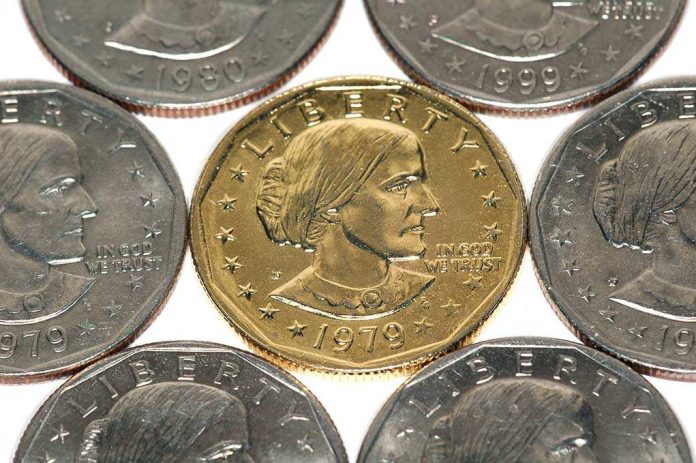
Americans are throwing away millions in coins every year, and now the government has declared that pennies are officially trash—ending their 230-year run and igniting a debate about what we value, what we waste, and what the future holds for physical money.
Story Snapshot
- The U.S. Mint has stopped producing pennies as of November 16, 2025, after mounting costs and public indifference.
- Waste management firms report millions of discarded coins, reflecting a dramatic shift in consumer behavior.
- Retailers and banks scramble to adjust cash handling as pennies remain legal tender but vanish from circulation.
- Experts see this as a watershed moment for currency modernization and the rise of digital payments.
Pennies Become Trash: Government Pulls the Plug
The United States has ended penny production, a decision rooted in economic reality and cultural change. For decades, the penny’s value eroded until the cost to manufacture each one soared to more than triple its face value. By 2023, the government was spending 3.1 cents to produce each penny, bleeding millions in negative seigniorage. After years of debate, Congress and the Treasury Department launched a public campaign to explain the change and reassure citizens about the transition.
Waste management companies reported a sharp uptick in discarded coins. Reworld, a leading waste processor, estimated that Americans toss $68 million in coins annually, with pennies leading the pack. The sheer volume of pennies found in trash heaps underscored how little the public valued them. Digital payment systems, combined with persistent inflation, pushed coins out of daily life. Vending machines, parking meters, and checkout counters adapted, accepting cards and mobile payments instead of clinking copper.
Historical Value Lost, Practical Value Gained
Pennies once carried real purchasing power. In the late 18th century, they bought bread, paid tolls, and filled piggy banks. Over time, inflation and a digitizing economy rendered them obsolete. By the 2020s, proposals to eliminate the penny grew louder, referencing successful precedents in countries like Canada and Australia. While American lawmakers hesitated, public opinion shifted. A growing number of consumers began discarding coins as trash, viewing them as clutter instead of currency. The U.S. Mint’s biennial reports tracked this change, providing Congress with the data needed to justify the penny’s demise.
Retailers and banks responded with pragmatic adjustments. Cash transactions now round to the nearest nickel, and most point-of-sale systems seamlessly accommodate the change. Existing pennies remain legal tender, but their disappearance is inevitable. The transition period is short, with minor logistical headaches for cash-dependent consumers and businesses. For most Americans, the end of the penny is a non-event—except for coin collectors and sentimentalists clinging to a fading symbol of the past.
The Economics of Currency Modernization
The penny’s elimination is a textbook case of fiscal responsibility. Economists have long criticized the inefficiency of producing coins at a loss. Hubbard O’Brien Economics and Federal Reserve analysts cited inflation, metal prices, and consumer trends as drivers of negative seigniorage. Some experts, like François Velde at the Federal Reserve Bank of Chicago, suggested revaluing the penny to five cents; others argued for its outright elimination. The government ultimately sided with common sense and the numbers, ending a costly tradition.
Digital payments accelerate currency modernization. As pennies and nickels fade, so does the need for physical cash. Retailers, banks, and waste processors streamline operations, saving time and resources. The move sets a precedent for reviewing other low-denomination coins, with the nickel likely next on the chopping block. For consumers, the adjustment is seamless—most transactions already occur on screens and apps. The penny’s demise is less a disruption and more a reflection of how quickly society adapts when the old ways no longer serve.
Sources:
Hubbard O’Brien Economics, U.S. Mint, Federal Reserve









